The peeling oysterling (Crepidotus mollis) looks like a miniature replication of the much sought-after pearl oyster, which means it often gets confused by hopeful foragers. The peeling oyster isn’t toxic, but it also isn’t exactly edible. It’s just that it’s so small and unsubstantial that it’s not worth collecting. It would cook up to basically nothing, so no one has really dived into foraging and determining the actual edibility of these mushrooms. Peeling oyster mushrooms are common and widespread across North America.
Finding peeling oysterlings is often a disappointment for the forager looking for dinner. It looks all the world like a baby oyster mushroom, possibly on its way to growing much bigger and suitable for the frying pan. However, it’s pretty easy to tell you’ve got the full-grown mini-me peeling oysterling on closer identification. A spore print will determine the truth if there are any questions.
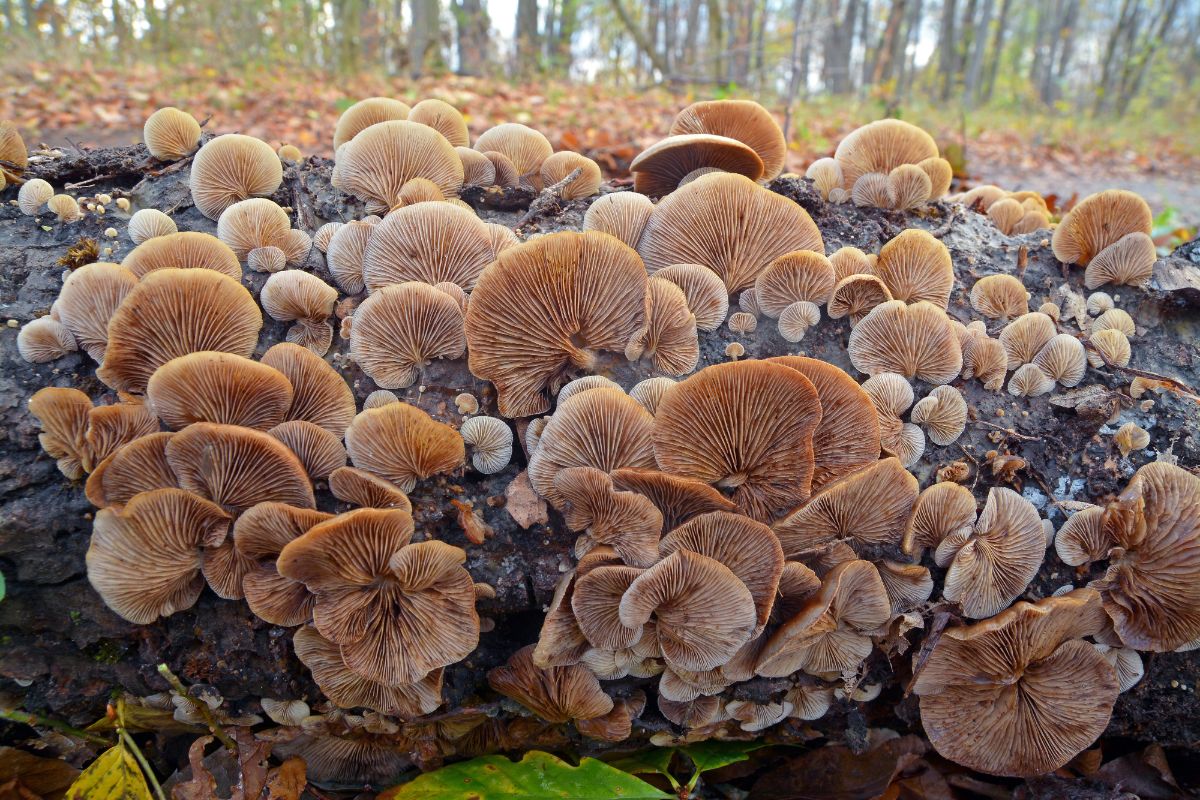
Many folks think Crepidotus species are drab, small, and rather disappointing, and many times, they are just that. They appear in large numbers and are super common. It would be so wonderful if they were actually edible, but they’re not. However, this forager appreciates the attractive gill arrangement and tries to focus on the great job these little fungi do in the forest, breaking down organic material into accessible nutrients for other plants and trees. Go Crepidotus!
- Scientific Name: Crepidotus mollis
- Common Names: Peeling Oyster, Soft Slipper, Flabby Crepidotus, Jelly Crep
- Habitat: Dead and decaying hardwood
- Edibility: Inedible
Jump to:
All About Peeling Oysterling Mushrooms
Known by various names, including the peeling oysterling, soft slipper, jelly crep, and flabby crepidotus, this mushroom’s likeness to the popular edible oyster mushroom means it gets a lot of attention. The mushroom’s common name, “peeling oysterling,” is drawn from its distinctive characteristics. The term “peeling” refers to the peeling nature of its cap cuticle, while “oysterling” alludes to its oyster-like shape.
It is small compared to the true oyster mushroom, rarely more than 2 inches wide. But, in all other ways, including shape, gills, coloring, and growth habit, it resembles its much larger distant relative. Peeling oysterlings and oyster mushrooms are not closely related; they just happened to take on very similar forms. The peeling oysterling is actually quite big compared to other members of its genus. Crepidotus fungi are small, beautiful, saprobic species that grow on decaying wood and plant matter.
The peeling oyster mushroom was first scientifically described in 1774 by Jacob Christian Schaeffer, who initially classified it as Agaricus mollis. It was later transferred to its current genus, Crepidotus, by German mycologist Friedrich Staude in 1857. The species name “mollis” is derived from the Latin word for “soft,” which aptly describes the texture of this mushroom.
The fungal parasite Hypomyces tremellicola sometimes attacks the peeling oysterling and causes deformed caps. This is the same Hypomyces species that creates the delicious lobster mushroom. In the case of the peeling oysterling, sadly, the transformation doesn’t turn it into a prime edible species. The deformities often look like the cap got turned inside out, with the gills facing bizarrely outwards and no evidence of an actual cap.
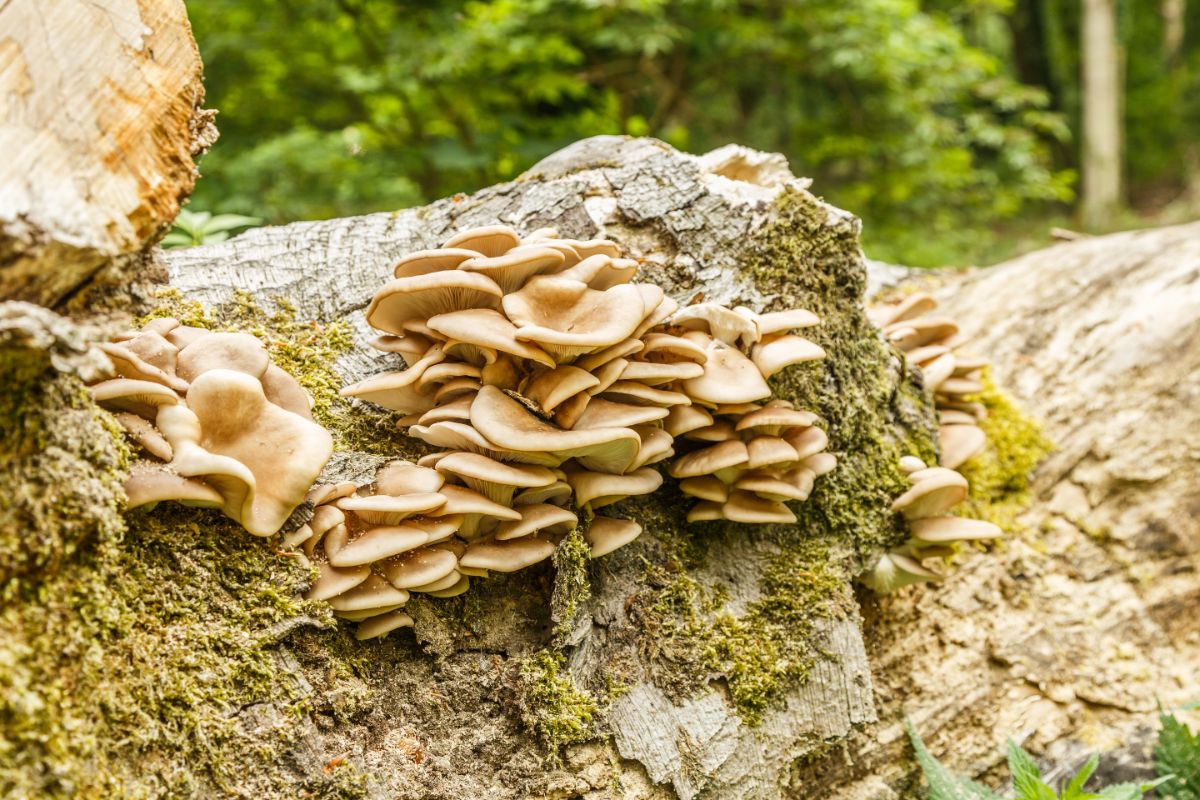
Peeling Oysterling Identification Guide
Season
The fruiting season typically spans from July to September.
Habitat
The peeling oysterling has a particular affinity for hardwood logs and the bark of living trees. It thrives in well-shaded, damp woodlands, often near streams that maintain a moist atmosphere. While it primarily grows on hardwood, it has also been observed on coniferous trees.
These mushrooms grow on live and dead trees, branches, logs, and wood mulch. They never grow from the ground. Peeling oysterlings fruit in large or small scattered groupings, often overlapping.
The peeling oysterling is widely distributed and commonly encountered in temperate zones across North America. It is also found in South America, Europe, Asia, the Caribbean, and Africa.
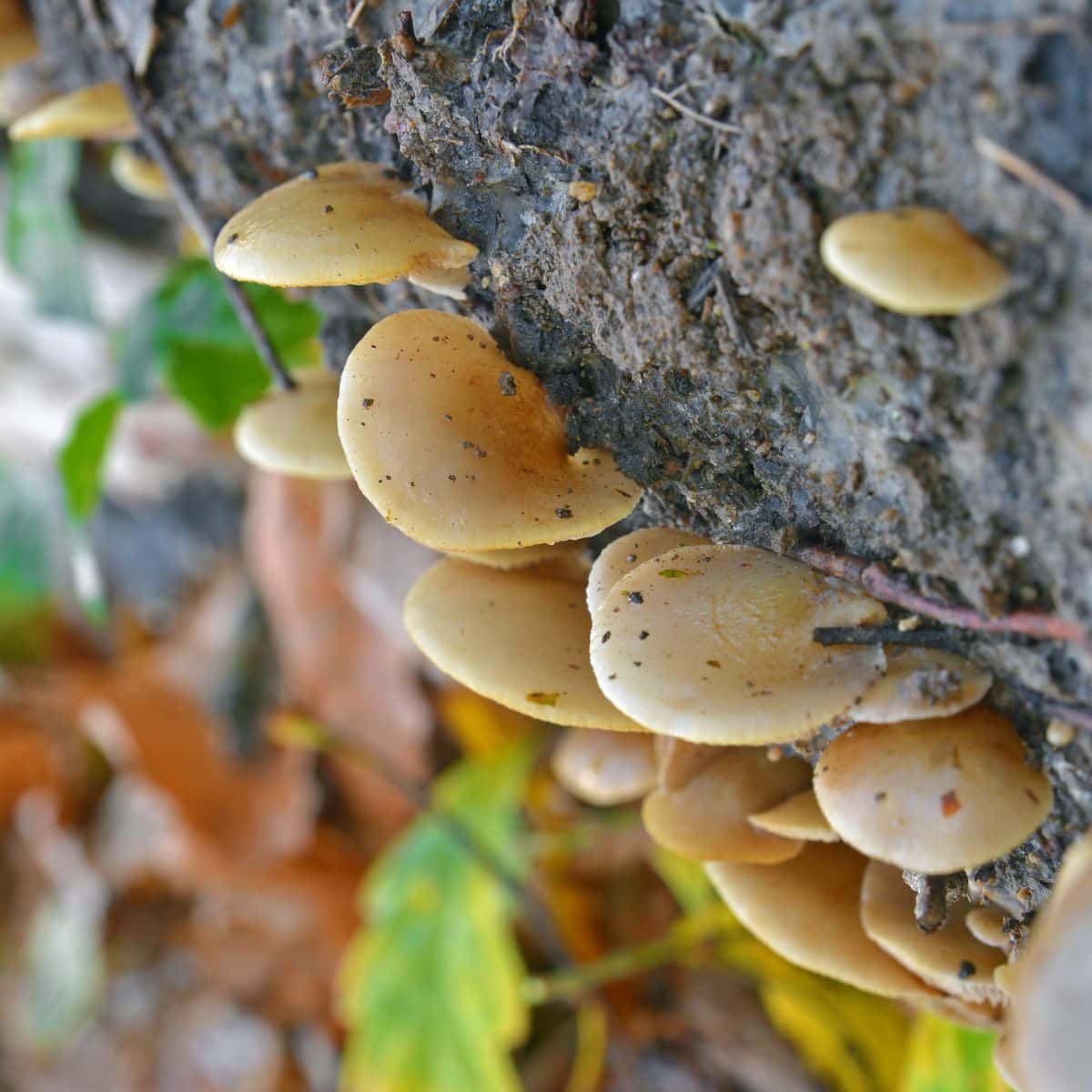
Identification
Cap
The cap of the peeling oysterling is initially very pale tan to grayish and ranges in size from .25-2 inches wide. It is fan or shell-shaped (semicircular). As the mushroom matures, the cap fades to a white or off-white color. It is bald, without any decoration or fibers on the cap, and may be moist or dry depending on the weather conditions.
Peeling oyster mushroom caps are hygrophanous, which means their color changes as they take in or lose water. The cap coloring is more transparent when it absorbs a lot of water. When it is more dry, it is opaque (cannot see through it). This can make determining the actual cap color complicated since it can change with the weather. But, overall, the color is always a bland pale tan or off-white/gray with this species.
The cuticle of this species, the other layer of skin over the mushroom cap, is gelatinous and readily peels away. This is how it gets its common name: peeling oysterling. Carefully pull up the thin, sticky skin covering the mushroom flesh, and it should peel away pretty easily. The edges of the mushroom cap are often translucent to the point they’re see-through if you stretch them out.
Many online and in-print mushroom guides describe the peeling oyster as having brown fibers on its cap. This is because this species (C.molllis) is often combined/confused with another Crepidotus species, C. calolepis. In fact, some people treat them as the same species, with the brown fibrous cap version being just a variation of C. mollis. We are separating them, and there is an entry for C. calolepis in the lookalikes section.
Gills
The gills of the peeling oysterling are close to moderately spaced and radiate out from the attachment point – the base where it attaches to the wood. When young, the gills are whitish, but they become dull brown as the fruit body matures. There are long and short gills; the short gills don’t reach all the way to the attachment point.
Stem
The peeling oysterling mushroom does not have a visible stem, or only have a very small stub of one. Instead, the attachment to the wood occurs at one point of the cap, with the gills radiating from this point.
Flesh
The flesh of the peeling oysterling is white, watery, and easily broken. The texture is rubbery and flabby.
Odor
Crepidotus mollis does not have a distinctive odor.
Spore Print
The spores are medium brown. This is a key way to distinguish it from other mushroom species, such as the edible oyster mushroom, whose spore print is white.
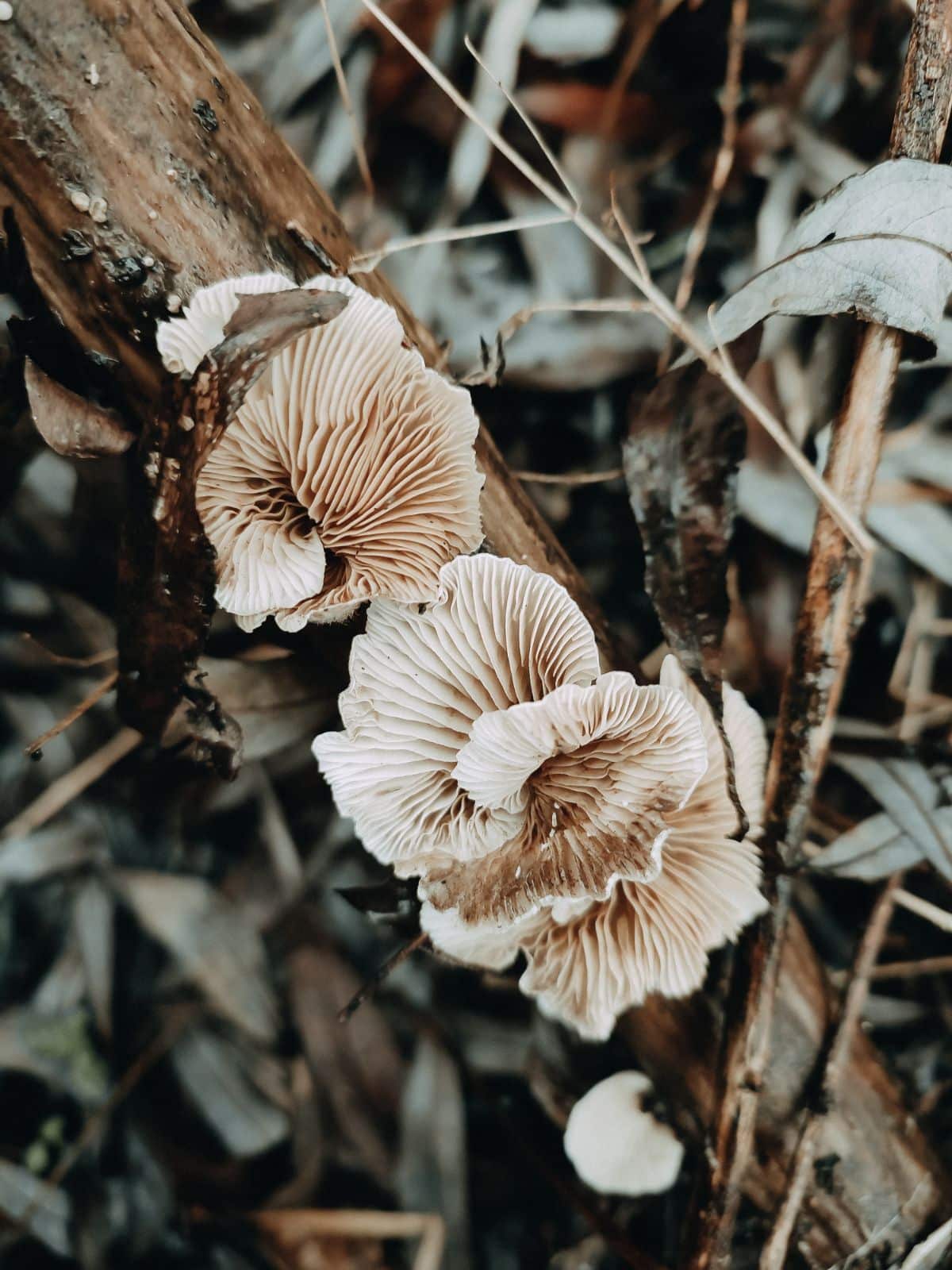
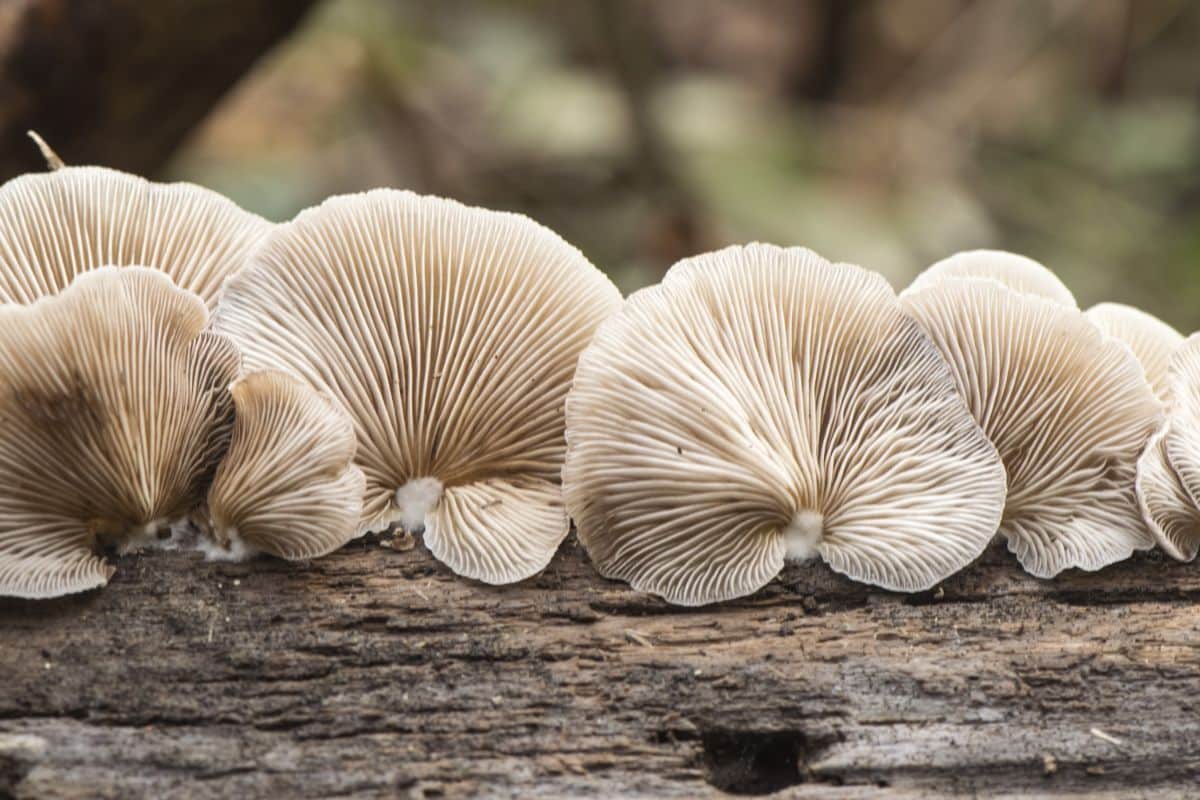
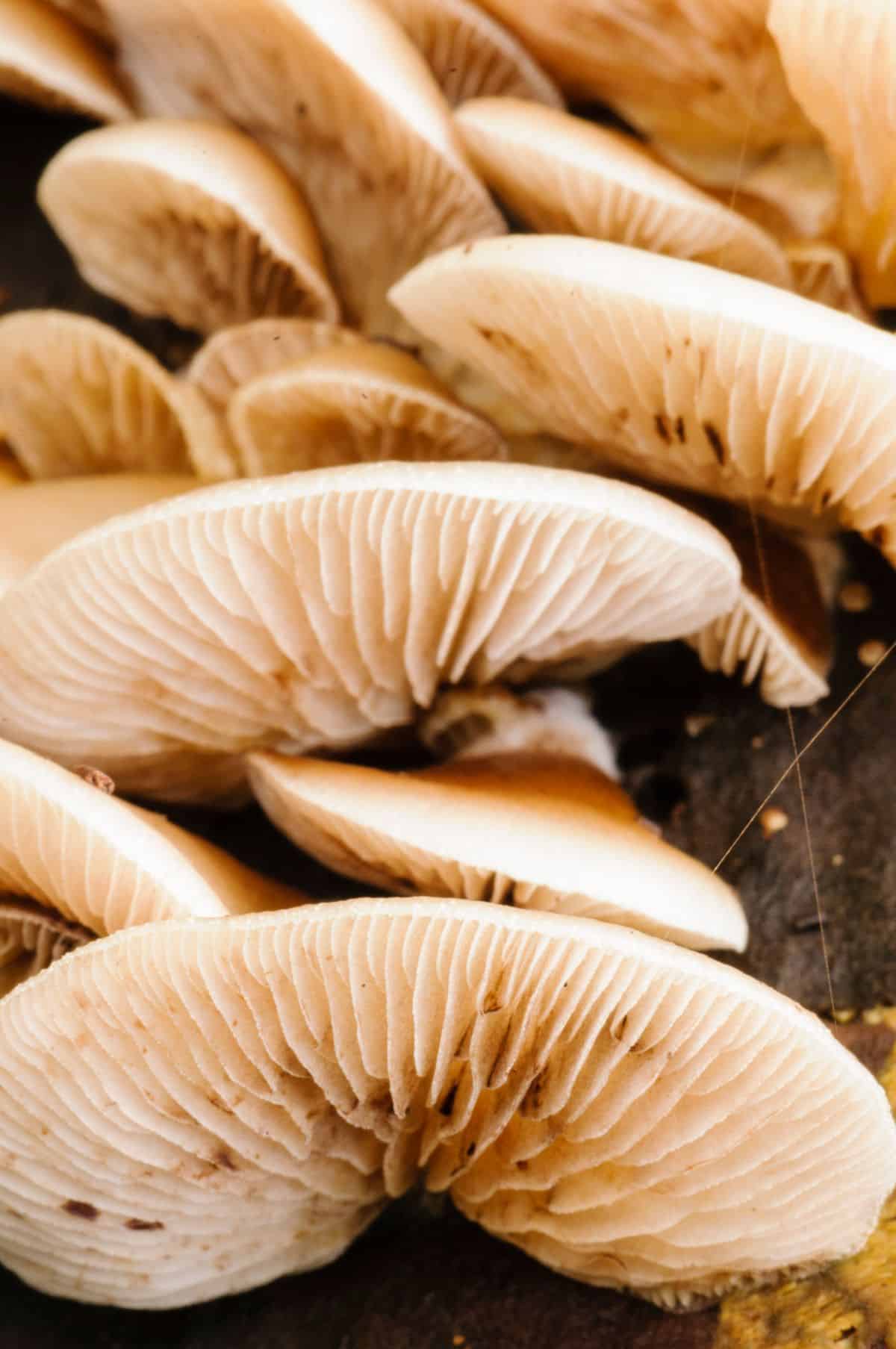
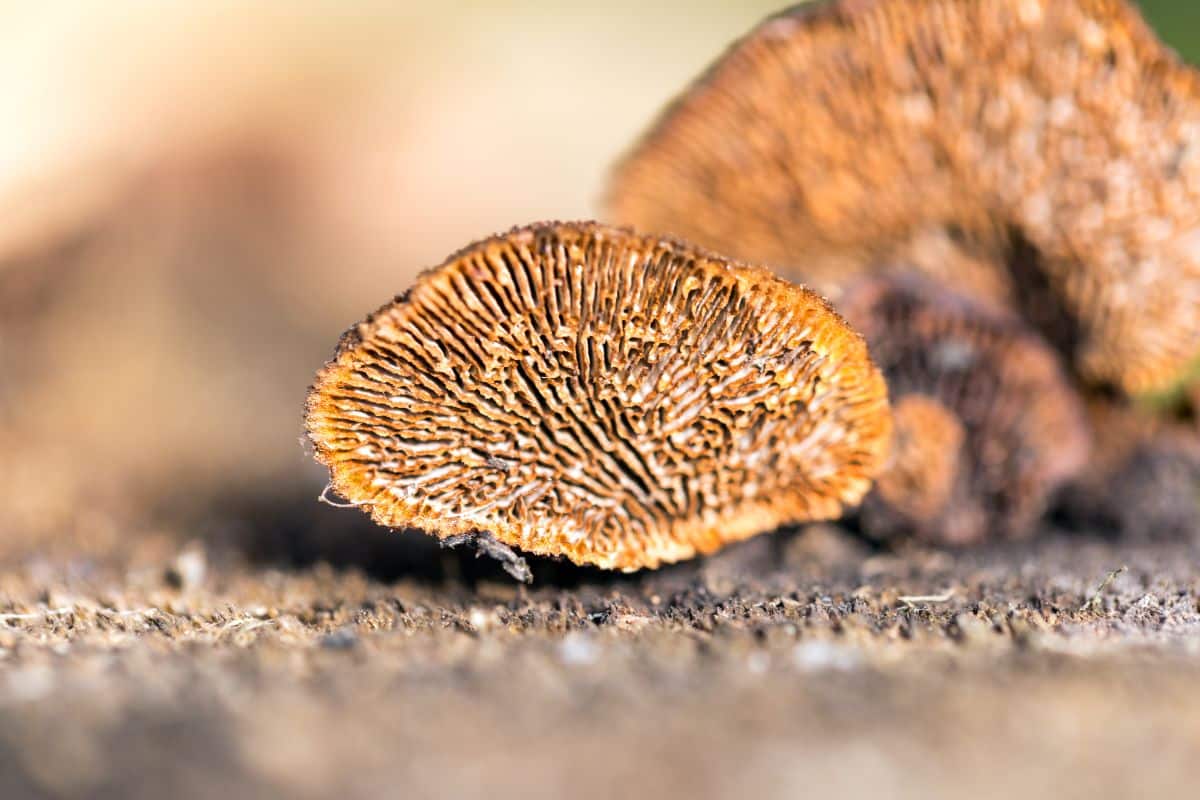
Peeling Oysterling Lookalikes
The peeling oysterling is often mistaken for Crepidotus applanatus, Crepidotus crocophyllus, and Pleurotus ostreatus, commonly known as the oyster mushroom. While these mushrooms share some similarities, there are key differentiating features to consider.
Scaly Oysterling (Crepidotus calolepis)
This species is a twin of the peeling oyster with one significant difference. It has brown fibers all over the cap. The brown fibers can wash off with age and weather, but there is usually some sign they were there.
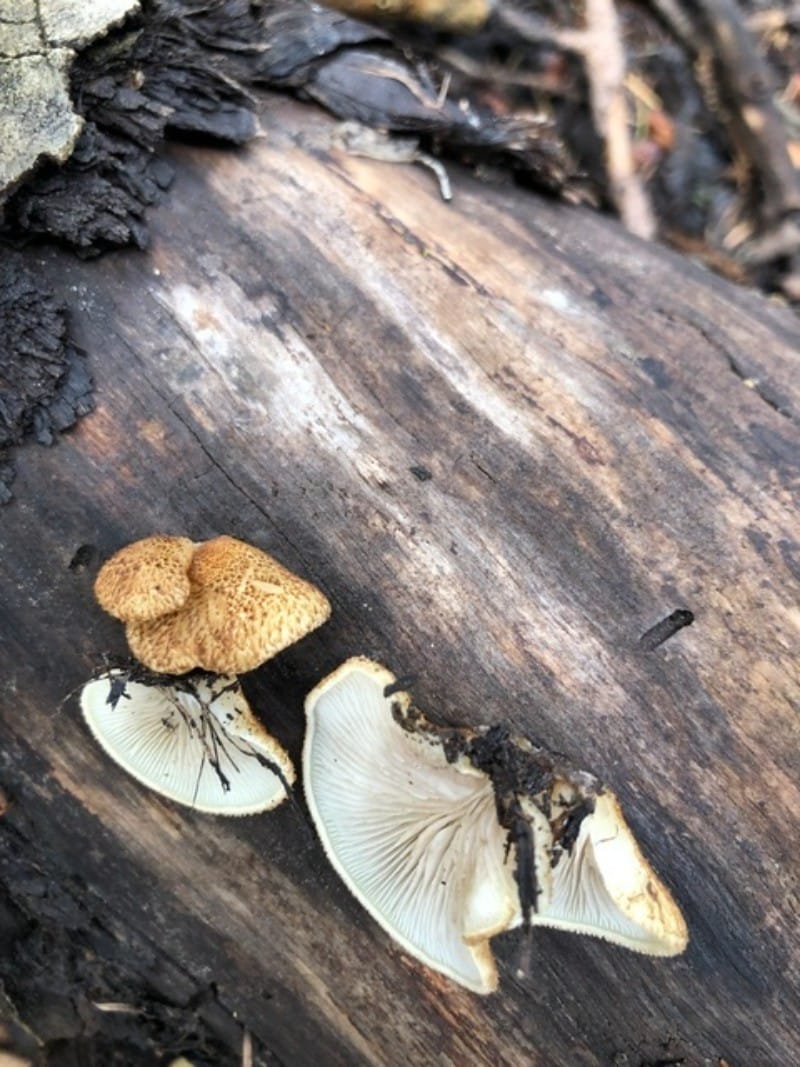
Flat Oysterling (Crepidotus applanatus)
The flat crepidotus has a flattened cap and a more fibrous texture compared to the peeling oysterling. It also tends to be browner but that is not always the case. It can be hard to tell these apart!
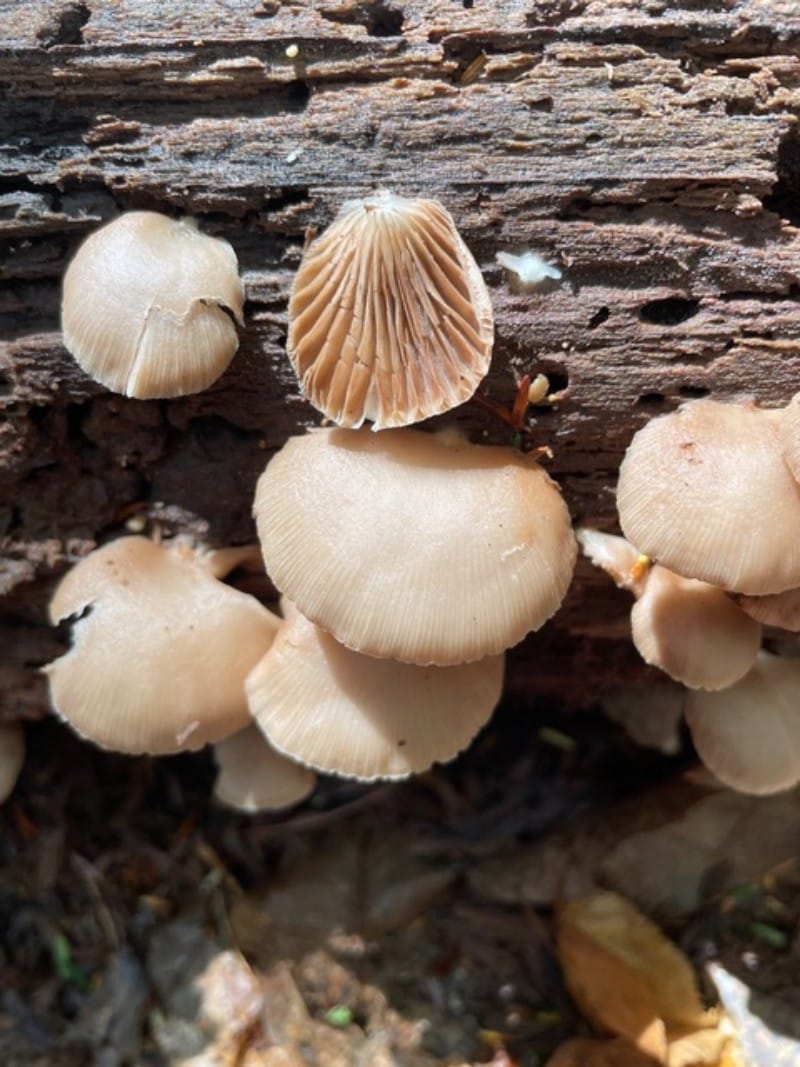
Orange Crep (Crepidotus crocophyllus)
The orange crep closely resembles the peeling oysterling but can be distinguished by a browner cap and yellowish-orange young gills. It’s flesh also isn’t rubbery.
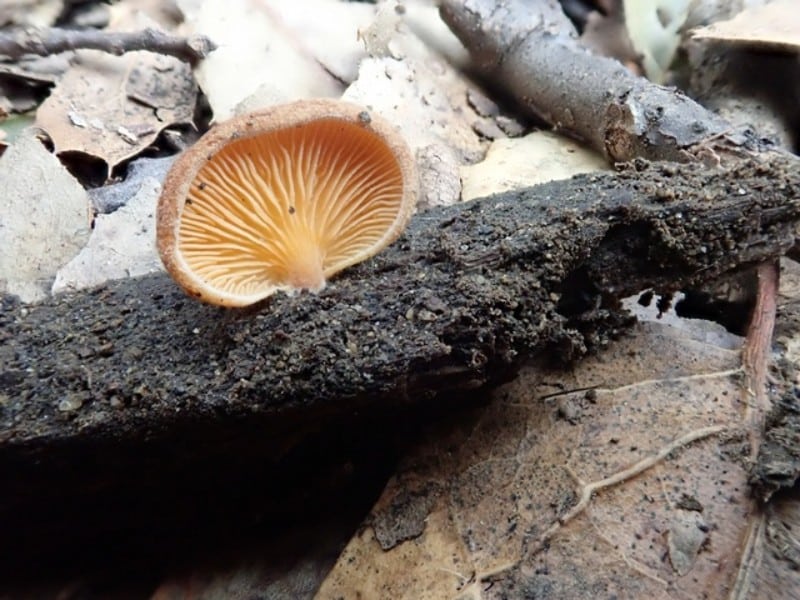
Oyster Mushroom (Pleurotus ostreatus)
The edible oyster mushroom has a white spore print and lacks the gelatinous cuticle and rubbery texture characteristic of the peeling oysterling. It also is much larger in maturity. A true oyster mushroom does not remain 2” wide – that’s where it starts out and grows much larger from there, and usually quite quickly.
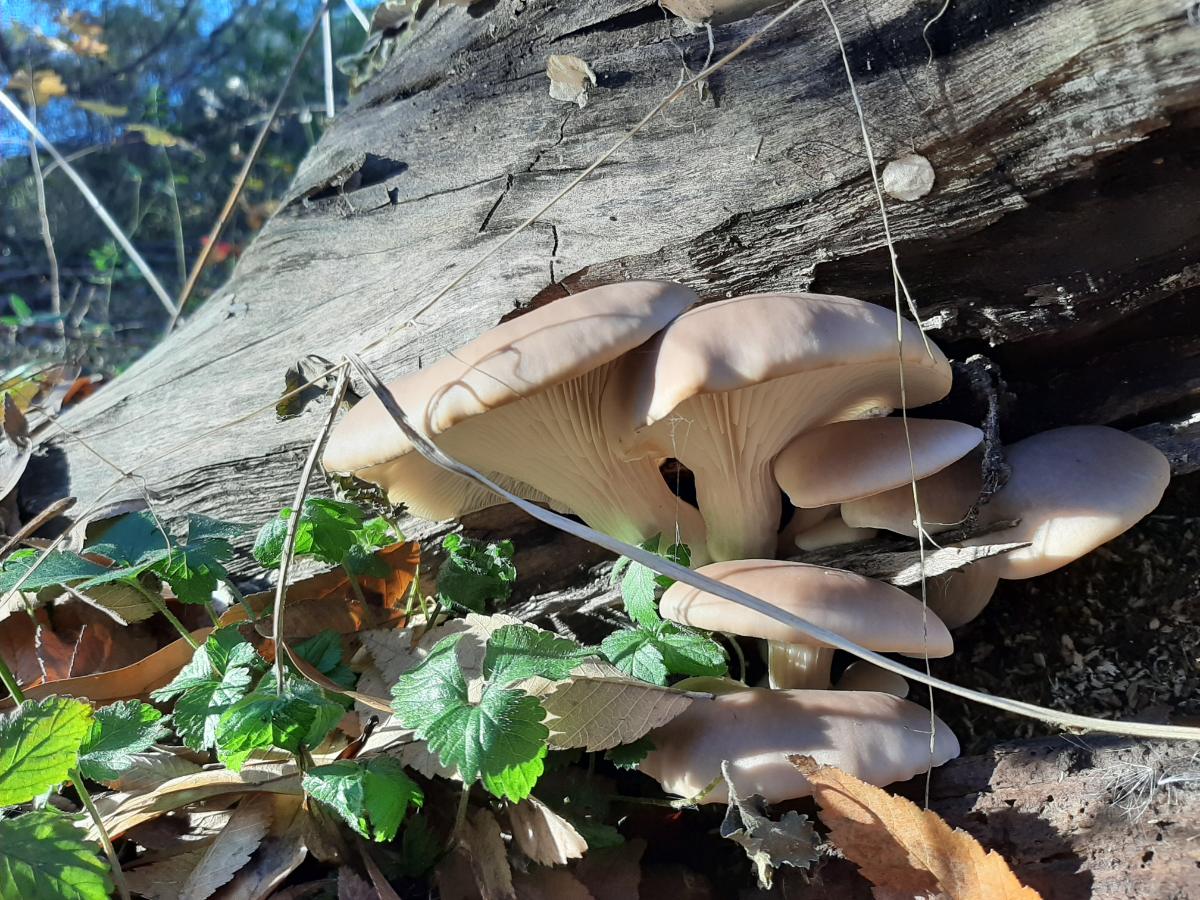
Peeling Oysterling Edibility
While the edibility of Crepidotus mollis is still uncertain, it is generally considered inedible and potentially even poisonous. Its small size and unsubstantial flesh make it less than desirable for culinary purposes.
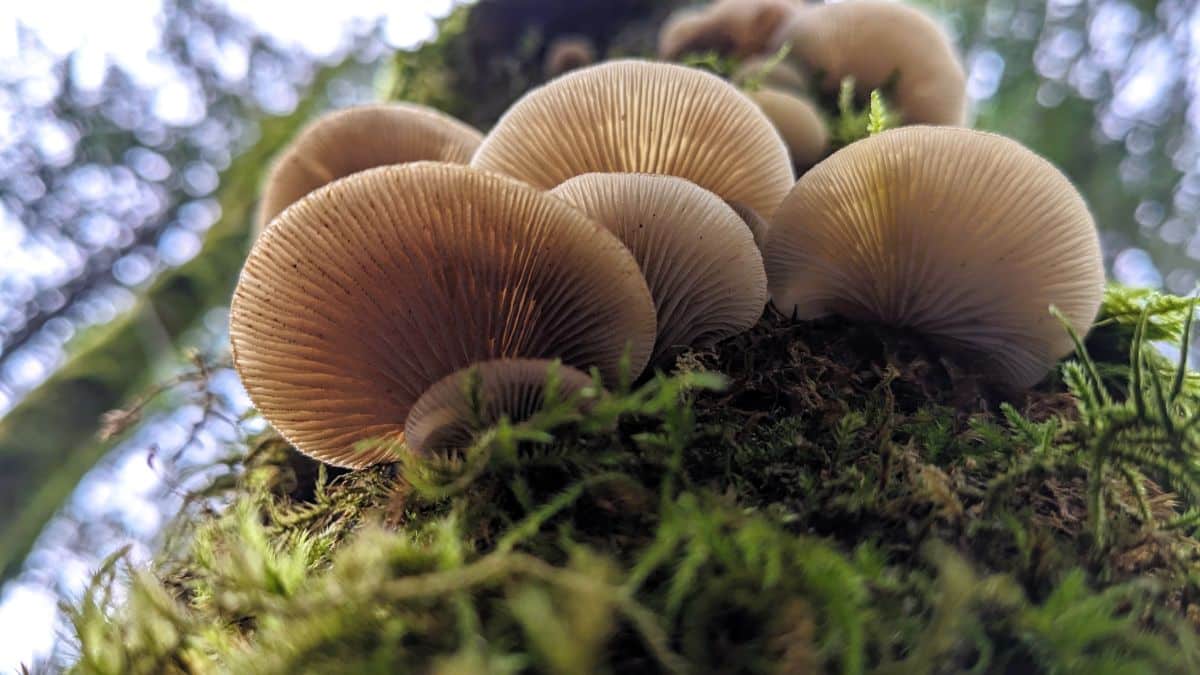
Peeling Oysterling Mushroom Common Questions
Does the Peeling Oysterling have medicinal properties?
The medicinal properties of Crepidotus mollis have not been extensively studied, but mushrooms in the Crepidotus genus have been recognized for their potential health benefits. Fungi in the Crepidotus genus may contain bioactive compounds with antioxidant, anti-inflammatory, and immunomodulatory properties.

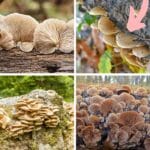
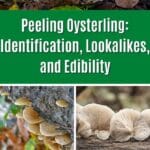

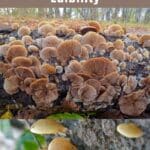




Leave a Reply